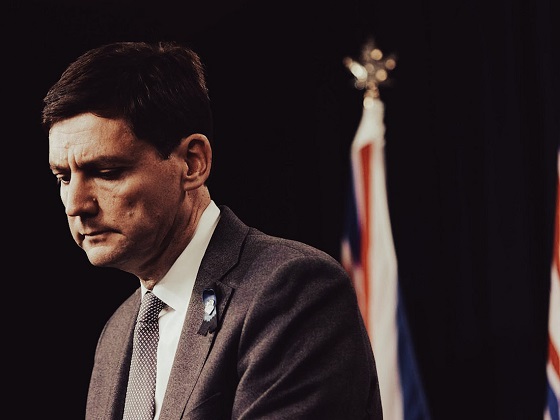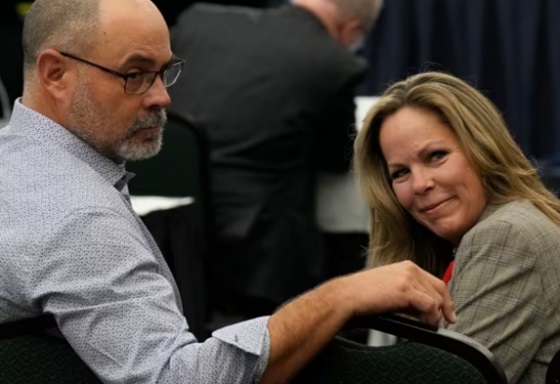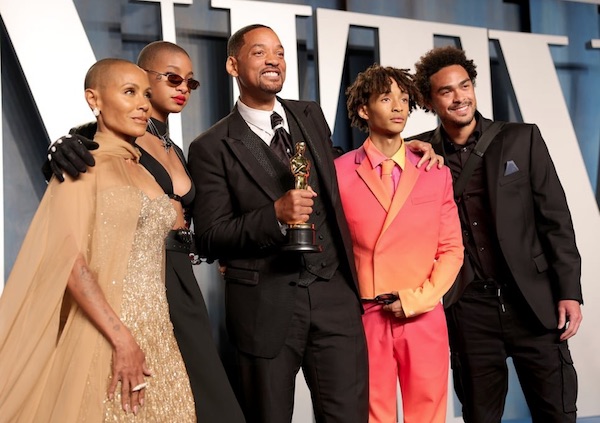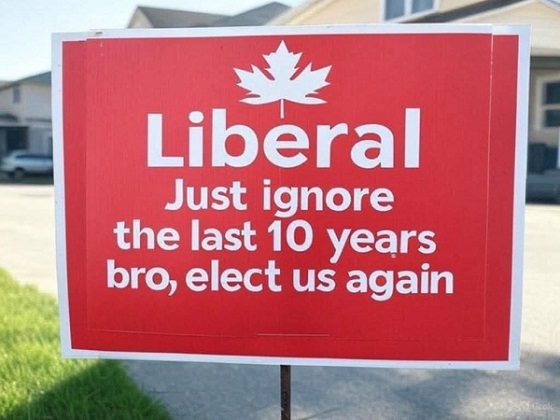Automotive
Biden’s Ambitious EV Charging ‘Fantasy’ May Be On A Collision Course With Reality

 From the Daily Caller News Foundation
From the Daily Caller News Foundation
By NICK POPE
President Joe Biden has pledged to install 500,000 public electric vehicle (EV) chargers around the U.S. by 2030, but logistical hurdles may be too much to overcome.
The Biden administration landed $7.5 billion to build out a network of public EV charging stations around the country in the bipartisan infrastructure package of 2021, but those funds have only led to a handful of operational charging stations to date. Transportation Secretary Pete Buttigieg reaffirmed the administration’s goal to build 500,000 chargers with the money by 2030 during a May television appearance on CBS News, but challenges like adding transmission lines, navigating the permitting process and coordinating with utility companies figure to make the goal improbable.
As of April 1, the administration’s $7.5 billion push had only led to seven operational charging stations combining for less than 40 chargers around the U.S., a pace that has drawn criticism from House Republicans and even Democratic Oregon Sen. Jeff Merkley. While other projects are on their way to being built and operational, the nation’s EV charging infrastructure remains mostly concentrated in more densely-populated, coastal areas of the country, according to the Department of Energy (DOE).
Dem Senator Rips Biden Official Over Sluggish Rollout Of Key EV Program pic.twitter.com/Ldj1dhJ8Jo
— Daily Caller (@DailyCaller) June 5, 2024
While results have been slow to materialize, federal funding should be sufficient to build approximately 25,000 charging spots at about 5,000 stations, according to Atlas Public Policy, a policy analysis organization that focuses specifically on EVs. In order to reach those figures by 2030, the administration’s funding will have to spur the construction of more than 900 stations each year until then, a big step up from the program’s output of less than 10 stations over nearly three years.
“Our programs are accelerating private sector investment that puts us on track to deploy 500,000 charging ports well ahead of schedule and continue to expand a convenient and reliable charging network,” a Department of Transportation spokesperson told the DCNF. “There are currently projects underway in partnership with states and local grantees for 14,000 federally-funded EV charging ports across the country under the [National Electric Vehicle Infrastructure (NEVI)] and [Charging and Fueling Infrastructure (CFI)] programs that will build on the 184,000 chargers operational today.”
Of the 184,000 chargers in operation today, more than 107,000 were already in circulation as of 2020, the last full year before the Biden administration took office, according to the DOE. Moreover, there are only about 10,000 fast charger stations in the U.S., a number that EV proponents would like to see increase to alleviate the public’s concerns about EV range and recharging wait times, according to The Washington Post.
Some of the biggest logistical hurdles are ones that may not be immediately obvious, such as enduring the process of building out needed transmission lines and upgrading existing utility infrastructure to accommodate hundreds of thousands of new chargers, according to experts who spoke with the Daily Caller News Foundation about whether such a number of chargers will be operational by 2030.
One skeptical expert is Dr. Jonathan Lesser, a senior fellow at the National Center for Energy Analytics and president of Continental Economics. Lesser estimates that “hundreds of thousands of miles” of new transmission lines will be needed to deliver enough electricity to the right places to meet the administration’s goal, a tall order given that the U.S. managed to complete less than 700 miles of transmission projects in 2022, according to data aggregated by Statista.
Lesser wrote his own analysis of the challenges the administration’s EV charger push faces for The Hill on Monday.
“The administration’s efforts to mandate EVs without considering the physical infrastructure to charge them (to say nothing of the cost), not only highway charging stations but also the necessary upgrades to millions of miles of local distribution circuits and transformers for home charging – is either an exercise in green virtue signaling or a cynical effort to restrict Americans’ mobility,” Lesser told the DCNF. “If EVs are the wave of the future then consumers will purchase them without the need for mandates and the private sector will develop the necessary infrastructure, just as it did a century ago and just as Tesla has done for its vehicles, without the need for government intervention.”
'Fundamentally Wrong': Virginia Heads For Exit Ramp After Adopting California's 'Out-Of-Touch' EV Rules https://t.co/oOKcH9Dha1
— Daily Caller (@DailyCaller) June 5, 2024
“If all those chargers were in place, you would need hundreds of thousands of large transformers and transmission lines along highways to provide the electricity,” Lesser continued. “You would also need linemen to install everything – and they are already in short supply. Of course, none of this addresses the issue of where the electricity comes from – if it is to be from renewables (e.g., wind and solar), there would have to be a massive building effort.”
Lesser believes there is “not a chance” that the 500,000 charger goal is met by 2030, and added that Buttigieg’s suggestion the administration will reach that target amounts to “pure fantasy.”
In addition to the billions of dollars meant to subsidize public charging infrastructure, the administration is also spending big to help manufacturers produce more EVs and to blunt the higher costs of EVs for consumers. Further, federal agencies have also promulgated aggressive fuel economy standards and tailpipe emissions rules that will force significant increases in EV sales over the next decade for light-, medium- and heavy-duty models.
Energy Secretary Jennifer Granholm described the chargers covered by the $7.5 billion program as “the hardest ones because they’re going to places where the private sector hasn’t gone because there’s no electricity, because they’re remote” at Politico’s 2024 Energy Summit remarks on Wednesday.
Aidan Mackenzie — an infrastructure fellow at the Institute for Progress with particular expertise covering energy, transportation and housing policy — agreed that logistical challenges are likely to hinder the administration’s goal for charger deployment by 2030. Specifically, he highlighted securing complementary infrastructure, like transmission lines, as likely to sap time and resources away from the effort to construct a national network of public chargers.
“It seems like it’s going to be hard to meet this target,” Mackenzie told the DCNF. “Different utility regions do not necessarily have an incentive to plan or build large capacity transmission lines that share power. They often interrupt the way that utilities want to control the generation in their region. So, I would very much expect that to be the binding constraint.”
However, Mackenzie added that the administration could achieve the desired results of its $7.5 billion program and its broader goal of 500,000 charger goal if regulators and builders are able to develop “muscle memory” in the earlier stages of rollout so that officials from both sectors can more easily and quickly navigate complex processes in the near future.
Automotive
Auto giant shuts down foreign plants as Trump moves to protect U.S. industry

 MxM News
MxM News
Quick Hit:
Stellantis is pausing vehicle production at two North American facilities—one in Canada and another in Mexico—following President Donald Trump’s announcement of 25% tariffs on foreign-made cars. The move marks one of the first corporate responses to the administration’s push to bring back American manufacturing.
Key Details:
-
In an email to workers Thursday, Stellantis North America chief Antonio Filosa directly tied the production pause to the new tariffs, writing that the company is “continuing to assess the medium- and long-term effects” but is “temporarily pausing production” at select assembly plants outside the U.S.
-
Production at the Windsor Assembly Plant in Ontario will be paused for two weeks, while the Toluca Assembly Plant in Mexico will be offline for the entire month of April.
-
These plants produce the Chrysler Pacifica minivan, the new Dodge Charger Daytona EV, the Jeep Compass SUV, and the Jeep Wagoneer S EV.
Diving Deeper:
On Wednesday afternoon in the White House Rose Garden, President Trump announced sweeping new tariffs aimed at revitalizing America’s auto manufacturing industry. The 25% tariffs on all imported cars are part of a broader “reciprocal tariffs” strategy, which Trump described as ending decades of globalist trade policies that hollowed out U.S. industry.
Just a day later, Stellantis became the first major automaker to act on the new policy, halting production at two of its international plants. According to an internal email obtained by CNBC, Stellantis North American COO Antonio Filosa said the company is “taking immediate actions” to respond to the tariff policy while continuing to evaluate the broader impact.
“These actions will impact some employees at several of our U.S. powertrain and stamping facilities that support those operations,” Filosa wrote.
The Windsor, Ontario plant, which builds the Chrysler Pacifica and the newly introduced Dodge Charger Daytona EV, will shut down for two weeks. The Toluca facility in Mexico, responsible for the Jeep Compass and Jeep Wagoneer S EV, will suspend operations for the entire month of April.
The move comes as Stellantis continues to face scrutiny for its reliance on low-wage labor in foreign markets. As reported by Breitbart News, the company has spent years shifting production and engineering jobs to countries like Brazil, India, Morocco, and Mexico—often at the expense of American workers. Last year alone, Stellantis cut around 400 U.S.-based engineering positions while ramping up operations overseas.
Meanwhile, General Motors appears to be responding differently. According to Reuters, GM told employees in a webcast Thursday that it will increase production of light-duty trucks at its Fort Wayne, Indiana plant—where it builds the Chevrolet Silverado and GMC Sierra. These models are also assembled in Mexico and Canada, but GM’s decision suggests a shift in production to the U.S. could be underway in light of the tariffs.
As Trump’s trade reset takes effect, more automakers are expected to recalibrate their production strategies—potentially signaling a long-awaited shift away from offshoring and toward rebuilding American industry.
2025 Federal Election
Don’t let the Liberals fool you on electric cars

 Dan McTeague
Dan McTeague
“The Liberals, hoodwinked by the ideological (and false) narrative that EVs are better for the environment, want to force you to replace the car or truck you love with one you can’t afford which doesn’t do what you need it to do.”
The Liberals’ carbon tax ploy is utterly shameless. For years they’ve been telling us that the Carbon Tax was a hallmark of Canadian patriotism, that it was the best way to save the planet, that it was really a “price on pollution,” which would ultimately benefit the little guy, in the form of a rebate in which Canadians would get back all the money they paid in, and more!
Meanwhile big, faceless Captain Planet villain corporations — who are out there wrecking the planet for the sheer fun of it! — will shoulder the whole burden.
But then, as people started to feel the hit to their wallets and polling on the topic fell off a cliff, the Liberals’ newly anointed leader — the environmentalist fanatic Mark Carney — threw himself a Trumpian signing ceremony, at which he and the party (at least rhetorically) kicked the carbon tax to the curb and started patting themselves on the back for saving Canada from the foul beast. “Don’t ask where it came from,” they seem to be saying. “The point is, it’s gone.”
Of course, it’s not. The Consumer Carbon Tax has been zeroed out, at least for the moment, not repealed. Meanwhile, the Industrial Carbon Tax, on business and industry, is not only being left in place, it’s being talked up in exactly the same terms as the Consumer Tax was.
No matter that it will continue to go up at the same rate as the Consumer Tax would have, such that it will be indistinguishable from the Consumer Tax by 2030. And no matter that the burden of that tax will ultimately be passed down to working Canadians in the form of higher prices.
Of course, when that happens, Carney & Co will probably blame Donald Trump, rather than their own crooked tax regime.
Yes, it is shameless. But it also puts Pierre Poilievre and the Conservatives in a bind. They’ve been proclaiming their intention to “Axe the Tax” for quite some time now. On the energy file, it was pretty much all you could get them to talk about. So much so that I was worried that upon entering government, they might just go after the low hanging fruit, repeal the Carbon Tax, and move on to other things, leaving the rest of the rotten Net-Zero superstructure in place.
But now, since the Liberals beat them to it (or claim they did,) the Conservatives are left grasping for a straightforward, signature policy which they can use to differentiate themselves from their opponents.
Poilievre’s recently announced intention to kill the Industrial Carbon Tax is welcome, especially at a time when Canadian business is under a tariff threat from both the U.S. and China. But that requires some explanation, and as the old political saying goes, “If you’re explaining, you’re losing.”
There is one policy change however, which comes to mind as a potential replacement. It’s bold, it would make the lives of Canadians materially better, and it’s so deeply interwoven with the “Green” grift of the environmentalist movement of which Mark Carney is so much a part that his party couldn’t possibly bring themselves to steal it.
Pierre Poilievre should pledge to repeal the Liberals’ Electric Vehicle mandate.
The EV mandate is bad policy. It forces Canadians to buy an expensive product — EVs cost more than Internal Combustion Engine (ICE) vehicles even when the federal government was subsidizing their purchase with a taxpayer-funded rebate of $5,000 per vehicle, but that program ran out of money in January and was discontinued. Without that rebate, EVs haven’t a prayer of competing with ICE vehicles.
EVs are particularly ill-suited for Canada. Their batteries are bad at holding a charge in the cold. Even in mild weather, EVs aren’t known for their reliability, a major downside in a country as spread out as ours. Maybe it’ll work out if you live in a big city, but what if you’re in the country? Heaven help you if your EV battery dies when you’re an hour away from everywhere.
Moreover, Canada doesn’t have the infrastructure to support a total replacement of gas-and-diesel driven vehicles with EVs. Our already-strained electrical grid just doesn’t have the capacity to support millions of EVs being plugged in every night. Natural Resources Canada estimates that we will need somewhere in the neighborhood of 450,000 public charging stations to support an entirely electric fleet. At the moment, we have roughly 30,000. That’s a pretty big gap to fill in ten years.
And that’s another fact which doesn’t get nearly as much attention as it should. The law mandates that every new vehicle sold in Canada must be electric by 2035. Maybe that sounded incredibly far in the future when it was passed, but now it’s only ten years away! That’s not a lot of time for these technological problems or cost issues to be resolved.
So the pitch from Poilievre here is simple.
“The Liberals, hoodwinked by the ideological (and false) narrative that EVs are better for the environment, want to force you to replace the car or truck you love with one you can’t afford which doesn’t do what you need it to do. If you vote Conservative, we will fix that, so you will be free to buy the vehicle that meets your needs, whether it’s battery or gas powered, because we trust you to make decisions for yourself. Mark Carney, on the other hand, does not. We won’t just Axe the Tax, we will End the EV Mandate!”
A decade (and counting) of Liberal misrule has saddled this country with a raft of onerous and expensive Net-Zero legislation I’d like to see the Conservative Party campaign against.
These include so-called “Clean Fuel” Regulations, Emissions Caps, their war on pipelines and Natural Gas terminals, not to mention Bill C-59, which bans businesses from touting the environmental benefits of their work if it doesn’t meet a government-approved standard.
But the EV mandate is bad for Canada, and terrible for Canadians. A pledge to repeal it would be an excellent start.
Dan McTeague is President of Canadians for Affordable Energy.
-

 Business2 days ago
Business2 days agoB.C. Credit Downgrade Signals Deepening Fiscal Trouble
-

 Freedom Convoy1 day ago
Freedom Convoy1 day agoFreedom Convoy leaders Tamara Lich, Chris Barber found guilty of mischief
-

 2025 Federal Election2 days ago
2025 Federal Election2 days agoHighly touted policies the Liberal government didn’t actually implement
-

 Canadian Energy Centre2 days ago
Canadian Energy Centre2 days agoSaskatchewan Indigenous leaders urging need for access to natural gas
-

 COVID-191 day ago
COVID-191 day agoTrump’s new NIH head fires top Fauci allies and COVID shot promoters, including Fauci’s wife
-

 Business2 days ago
Business2 days agoCalifornia planning to double film tax credits amid industry decline
-

 2025 Federal Election1 day ago
2025 Federal Election1 day agoWill Four More Years Of Liberals Prove The West’s Tipping Point?
-

 Courageous Discourse2 days ago
Courageous Discourse2 days agoEurope Had 127,350 Cases of Measles in 2024





